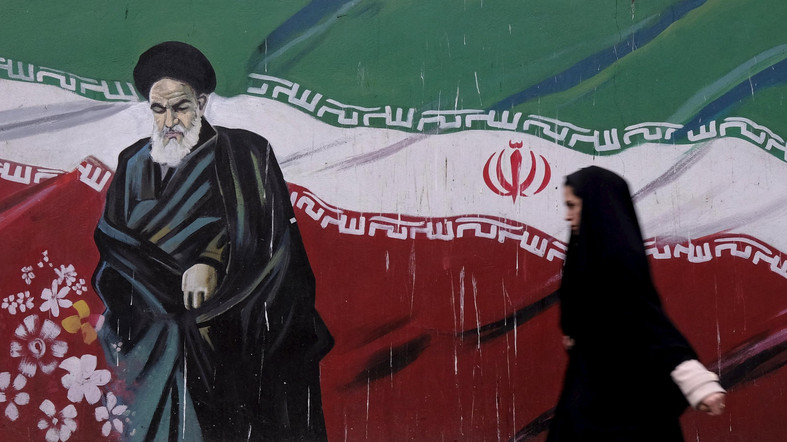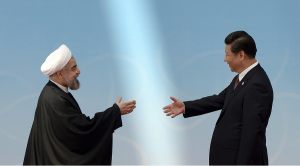Iran’s “Silk Road” to Recovery
 goo.gl/jpq4KO
goo.gl/jpq4KO
In response to the recent U.S. House of Representatives’ vote to extend American sanctions on Iran for 10 more years, Iran’s supreme leader Ayatollah Khamenei stated that Iran would retaliate if the legislation, known as the Iran Sanctions Extension Act (ISEA), gets passed. The ISEA would include missile, terrorism and nuclear sanctions on the Islamic Republic. However, before it passes, President Obama and the Senate have to sign it before the end of the year, which is when American sanctions in place now are supposed to expire.
While many proponents of the bill view it “as critical economic leverage to ensure Iranian compliance with the international nuclear agreement“, the Iranians see it as ‘a violation of the nuclear deal‘ struck between Iran and world powers last year. The bill would potentially end of the nuclear agreement, officially known as the Joint Comprehensive Plan of Action (JCPOA). Reached earlier this year under the joint effort of the P5+1 incorporating China, France, Germany, Russia, the UK, and the US, the deals were an arrangement between Iran and its Western counterparts to regulate Iran’s nuclear program, allowing it to develop its energy sector peacefully, exporting oil and gas, and pursue business with the larger international community. As a result, crippling international sanctions imposed by the US, EU and UN were all lifted.
As far as the JCPOA is concerned, other signatory countries of the Deal are affirming their continued support. Their involvement constrains US unilateral action in reversing the Iran nuclear deals. Following the U.S. vote, the French Foreign Minister Jean-Marc Ayrault and Iranian Deputy Foreign Minister Majid Takht-Ravanchi stressed the importance of commitment to the provisions of the deal. French President Francois Hollande also stated that the “accord gives us all security….Could the US with Donald Trump put into question this accord? I don’t think so”. This view was echoed by Wolfing Piccoli, co-president of global advisory firm Teneo Intelligence, who stated, “This is a P5 deal so there’s only so much damage that can be done on the front by a new US president”.
Nevertheless, the threat of ’10 years of more sanctions’ should not be undermined as prominent U.S. government senior officials, notably Republican Figure Ed Royce, are fighting for the act to pass. At this juncture, however, little has changed since the momentous signing of the deal in July 2015. For Iran and European countries eager to take advantage of opportunities presented by the accord, it has all been very anti-climactic with ‘dozens of energy, aviation and construction deals’, held up by the U.S.

However, signs of a potential shift emerged 10 days ago when the U.S. issued a second licence to France’s Airbus to sell 106 commercial planes to Iran Air, bringing “the elderly fleet” a step closer to receiving new Western Jets. As Reuters reported, “although Airbus is based in France, it must have U.S. approval to sell planes to Iran because at least 10 percent of the aircraft’s components are American-made”. Tehran has reportedly placed orders for more than 100 jets each from Airbus and Boeing this year.
The frustration with too slow easing of sanctions and financial restrictions is evidenced by growing restlessness among European business and policy makers, as the vice president of the European Parliament’s Delegation for Relations with the United States remarked: “Europe is being taken hostage by American policy,” It seems that the Deal did not provide Iran with the clean start it had hoped for, as Europeans are reluctant to invest in Iran without the certainty that US sanctions won’t snap back into place, which they now threaten to do. Iran will be counting on European nations to honour their promise to ‘draw Iran out of its international isolation’. and stand firm in the face of U.S. ambivalence, not to say sabotage of the nuclear deal. However, so long as the Americans nurture a culture of suspicion and weariness towards Iran, European investors are unlikely to find ‘peace of mind for dealing with Iran’.
It is the Iranians themselves who are the most disheartened and frustrated with the aftermath of what was intended to be the pathway to a future of greater openness and exchange. Having lived for almost four decades under sanctions, the damaging effects of which are perceived as, “no less than a military war“, having cost the “country more than $160bn in oil revenue since 2012 alone”.
One country less likely to be phased by the U.S. renewal of sanctions is China. Following the Joint Comprehensive Plan of Action (JCPOA), China was first to call on Iran’s energy market and discuss further investment opportunities and Chinese President Xi Jinping was also the first head of state to visit Tehran ‘promising $600 billion of trade over 10 years’. For years, China has helped Iran “weather the storm” of the US and European sanctions, particularly so in the last decade when it has played a critical role in alleviating the weight of the 2010 sanctions, which placed a stranglehold on Iran with regard to access to the international financial sector, thus throwing a chink into U.S. armour of coercive diplomacy towards Iran. Given the volume of trade between the two countries, dwarfing that with the EU, Iran could feel emboldened to “ignore threats from the U.S. or EU authorities” . Unlike the EU, who avoided cooperating with Iran largely because of the U.S., China pursued opportunities in the energy market for production and development and maintained a ‘keen interest in Iran’s strategic location which borders both the Caspian Sea and the Persian Gulf. China has benefited by the vacuum left by European states, and by 2014 it had ‘five times as much Iran commerce as the EU’.
Currently, China wants to take relations with Iran to the next step through its ambition to ‘rebuild ancient Silk Road trade routes to Europe’. The project known as the “One Belt” (OBOR) aims to connect China with Europe through the revival and development of Central Asian and Middle Eastern trade paths that operated in medieval times. There are two reasons why Iran is critical to China’s plans to resurrect the Silk Road. First, is its strategic location which is halfway between China and Europe. Second, Iran has vast energy supplies. It is currently ranked fourth in the world for proven oil reserves, and second for reserves of natural gas. Progress is already under way with train lines now running between Tehran and China’s East coast.
Although the Silk Road initiative is designed to fulfill China’s ambition to consolidate its position as leader in the global economy, Iran will also greatly benefit from the project at a regional level because of the large investment infrastructure it will bring. Most importantly, Iran will be able to claim a new strategic importance as the ‘hub between Europe and China’ placing it at the heart of East Asian, Central Asian and European markets. If all this comes to pass, it will be a big step for Iran from its position ordained by the Americans as one of the ‘rogue nations’ of the world left in near total isolation.
Although it is still not clear what the Americans will do regarding the act, European financial institutions are likely to remain on the fence until they know for sure. In the meantime, Iran and China are set to embark on a new chapter in their two-thousand year-old relationship based on mutual economic interest where Iran has “a great deal of resources that China needs“, and where China provides Iran a vital opportunity for growth.
In the future, it is likely that China will be largely unconstrained by politics of intimidation at work between western powers, hence creating a counterweight against US hegemony in the world economy “while reaping the economic benefits of a more globally integrated Iranian economy“. As for the Iranians, they are tired of waiting.
